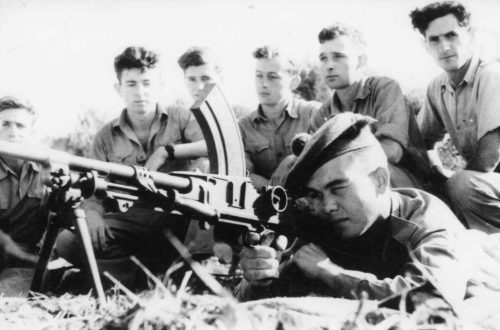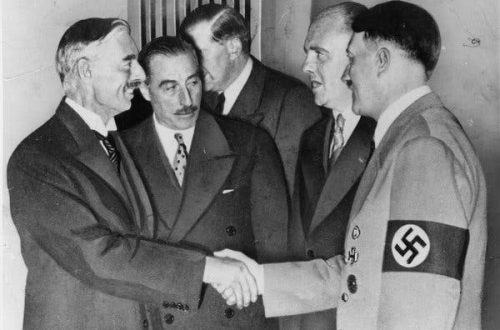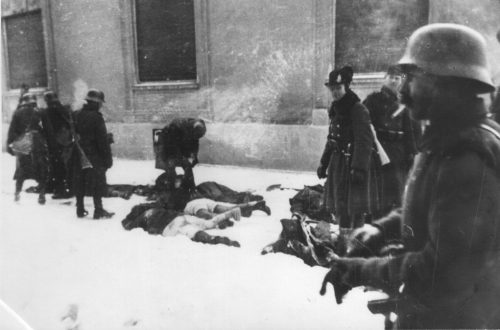Fed up with the war in Vietnam and that passive demonstrations had not brought it to an end, from October 8 through October 11, 1969 the increasingly radical Weathermen faction of the Students for a Democratic Society organised an orgy of violence in the streets of Chicago which the press dubbed “Days of Rage.” This name was proudly adopted by the Weathermen. The idea of this national action was to “Bring the War Home.” Simply being against the war was not enough for the Weathermen. Todd Gitlin (The Sixties [Bantam Books, 1993] p. 394), notes one of the weathermen explaining their position: “It’s not so much that we’re against the war; we’re for the Vietnamese people and their victory.” They wanted the Viet Cong to win and America to lose.
The Weathermen predicted that up to fifteen thousand would turn up. This was massively optimistic as in the end only a few hundred showed. Nevertheless, some thought that it would be the start of the revolution in the USA. Mark Rudd, a leader of the Weathermen, wrote a sympathetic account of the event in his memoirs of the period. He notes some of the slogans that were shouted at the event (Underground, [William Morrow, 2009] pp.172-6):
“The revolution has come!/Off the pig!/Time to pick up the gun!/Off the Pig!”
“Ho, Ho, Ho Chi Minh, dare to struggle, dare to win!”
“We love our uncle Ho Chi Minh, deep down in our hearts,/We love our Chairman Mao Tse-tung, deep down in our hearts.”
“Oink, oink, bang, bang! Dead pig!”
“Power to the people!”
Rudd argues that the Weathermen wanted to prove that they were serious about revolution and that they could live by Che Guevara’s law: “In revolution you either die or win.”
Days or Rage involved smashing shop, bank, restaurant and hotel windows as well as demolishing cars and getting into fights with the police in the Gold Coast neighbourhood or Chicago. The net effect was that there was a lot of damage and a lot of arrests but the revolution did not commence. Gitlin comments (The Sixties, p.394) that they did succeed in hoisting down the “Amerikan” flag from the Justice Department and replacing it with the flag of the Viet Cong.
The Weathermen became increasingly violent and ultimately a number of their members went underground and started blowing up buildings in the United States. This was clearly a great way to “bring the war home.” Mark Rudd (Underground, pp. 188-9) recalls a “National War Council” that the Weathermen held in Michigan in December 1969. Bernadine Dohrn thought the Weathermen had become too wimpy, they had to be vanguard of the revolution. She explained what the Weathermen were about: “We’re about being crazy motherfuckers and scaring the shit out of honky America.” Another Weatherman elaborated: “We’re against everything that’s good and decent in honky America. We will burn and loot and destroy. We are the incubation of your mother’s nightmare.” Rudd declared, “It’s a wonderful feeling to hit a pig. It must be a really wonderful feeling to kill a pig or blow up a building.” It was here that Dohrn made her infamous remark where she praised Charles Manson and his gang of murderers who had killed, among others, the actress Sharon Tate and her unborn child: “Dig it! First they killed those pigs, then they ate dinner in the same room with them. They even shoved a fork into the victim’s stomach! Wild!”
Below I copy an extract of a contemporaneous editorial from the Chicago Tribune on the Days of Rage:
Mad Dogs in the Streets
Chicago Tribune, October 10, 1969, p.18.
In the standard lexicon of Communists and revolutionaries the enemy (capitalism-“imperialism”) is characterized as “running dogs.” The young scum who brought madness to the streets of the near north side Wednesday night have a variant. They refer to the whole constituted order, from government thru the military and law-enforcing arm down to the huge majority of law-abiding citizens, as “pigs.”
Wednesday night these mobsters, rioters, vandals, and pillagers were the running dogs. They behaved worse than any pig ever could, for pigs, at least, are self-respecting animals. Animals these people were – fighting police, injuring 18 of their own number, overturning cars, breaking windows, beating motorists and passers-by.
This hoodlum conduct was mindless and meaningless. What ideological point or intellectual position could be registered by such behavior?
Moreover, this rabble went out of the way looking for trouble. The revolutionaries evidently sought what they call a “confrontation” with police when they assembled in Lincoln Park. When the police refused to oblige, the mob spilled into the streets. When the main force was turned back, it split into what organizers call “guerrilla” formations, and began to advance, between trot and run, on shops, restaurants, high-rise buildings, and other targets at hand. The windows of hundreds of parked cars were smashed and the bodies of cars marred and dented.
The weapons employed in this senseless destruction and in attacks on police and civilians were poles, boards, baseball bats, crowbars, rocks, bottles, and potatoes studded with razor blades.
We read with astonishment in some segments of the press that the perpetrators of this carnival of violence could appropriately be described as “radicals,” or “kids,” and that what they were doing was “demonstrating” or “protesting.” This is equivalent to describing the enforcers of the Mafia as instructors in adult education.
A sympathetic film about the Weathermen complete with some original film footage is available free on line.


